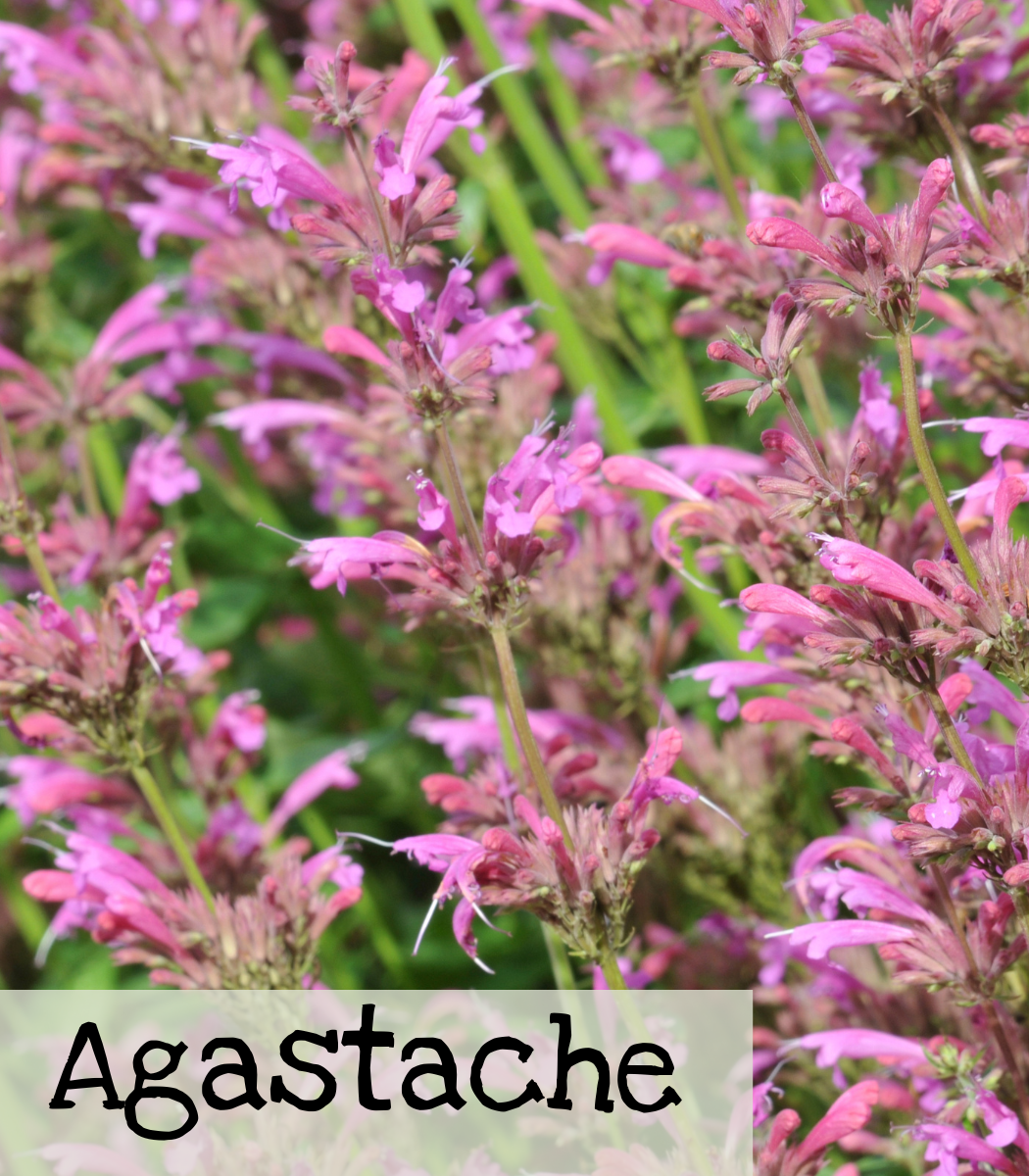
Aguastache
A member of the mint family, Agustache has showy flower spikes that are very fragrant. Deer don’t particularly like these flowers, but butterflies, hummingbirds, and other pollinators do!
|
Raspberry Daiquiri Rose Mint |
|
Agastache aurantiaca: Raspberry Daiquiri Agastache pallidiflora: Rose Mint |
|
Easy |
|
Easy |
|
Best guess 3 years if properly stored |
|
Perennial zones 5-9 |
|
14-21 days |
|
68-75 F |
|
Cold Stratification for 2 months is helpful when using saved seeds. |
|
1/4 inch |
|
Yes |
|
Raspberry Daiquiri: 15” high x 12” wide |
|
Seeds need light to germinate Full sun |
|
Early summer to mid-fall |
|
March, April |
|
No |

Growing Tips

When to Start
Late Winter: For saved seeds. Cold-stratify for 2 months. The whole process from starting from seed to transplanting will take about 4 months. (Start in January for Jefferson, GA)
Spring: Start indoors 6-8 weeks before the last frost. (Mid-Feb – March for Jefferson, GA)
Direct sow: Around the last frost for your area. (April 15 for Jefferson, GA)
How to Grow
Six to eight weeks before the last frost in your area, start Agastache indoors. However, if you are using saved seeds, they will germinate better if they have been cold-stratified for 2 months first.
Using pre-moistened seed starting mix, sow Agastache seeds 1/4 inch deep into nursery pots or cells. Then place under grow lights. Keep the soil moist but not soggy.
To cold-stratify saved seeds, after sowing seeds following the directions above, place the pots or cells on a piece of cardboard to give stability and seal them in a plastic bag. Then place the bag in the refrigerator for 2 months. Check every so often to make sure nothing is molded. After the two months place the cells or pots under grow lights for 6-8 weeks.
Pot up if needed once the Agastache has at least 2 true leaves and is as tall as the pot is deep. Transplant after hardening off and all danger of frost has passed.
Space or thin plants to 16 inches apart.
Care
Agastache likes full sun beds that are rich and well-draining but it is tolerant of other soils. The exception is soils that have standing water, especially in the winter. Winter wet feet will often kill these plants. Plant Agastache in a container if your soil doesn’t drain well or mix in organic matter to create better drainage.
It likes a soil pH of slightly acidic to more alkaline 6.0-8.0. If your soil is acidic you can try amending the soil or grow in a container. As Agastache does self-sow, you may need to thin plants every year to keep the plants healthy. Overcrowding can lead to fungal disease and general poor health.
While a perennial in zones 5-9, Agastache benefits from heavy mulching during the winter months. Remove excess mulch in spring.
Pest Management
Agastache can struggle with powdery mildew. Proper spacing will allow for good air circulation, which will, in turn, help prevent the fungus. Bottom watering will also help with fungus prevention and it is also important not to overwater.
Slugs can be an issue, especially with young seedlings. An eggshell barrier will help control them. Place a ring of crushed eggshells around the base of the seedling, making sure there are no gaps. When the slugs crawl over the shells they will be cut and will dry out and die.
Seed Saving

Isolation Distance
Agastache have perfect flowers. Meaning they have both male and female parts in the same flower. They don’t need an insect to pollinate them, but pollinators love the blooms. To ensure purity, treat it like a pepper. Bag the blooms before they open with a mesh bag, this will keep insects out. Once the flowers open, remove the bag and mark the blooms with a colorful twist tie. This way you know which blooms were isolated.
Instructions
Collect flower spikes once they have turned dry and brown. Gently rub the flowers between your fingers or on a screen to release the seeds. Separate debris. Let the seeds dry further before storage and then store them in labeled, paper bags in a cool, dark place.
To propagate by cuttings
Take cuttings in summer and root in water.
Features
- Pollinator friendly
- Edible leaves
- Deer resistant
- Rabbit resistant
Sources:
Rareseeds.com
